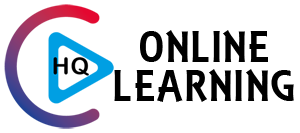4 Practices for Innovative School Leaders
If your school or district is anything like many others across the country, it has undergone transformational changes at a rapid (perhaps even dizzying) pace over the past two years. The challenges you continue to face demand that you influence more change, driven by creative problem solving and a bit of risk.
While innovation takes a unique form in every school, I’ve drawn upon my experience collaborating with innovative thinkers across the PreK-12 landscape to gather a few key practices that I believe will be critical this year. Consider how these changes can impact your daily work and influence outcomes for the teachers and learners you serve:
Reframe your understanding of personalized learning.
While it has undoubtedly become a buzzword in the industry, misused and misunderstood, personalized learning remains a non-negotiable goal for the future of PreK-12 education. Dylan Arena, VP of Learning Science on my team, recently wrote an op-ed on the evolution of the term where he asserts that a modern understanding of personalized learning requires us to know more about our students and use carefully designed technology to accommodate a wide range of student needs from a holistic lens.
Consider: What does your district qualify as successful personalized learning now? The definition likely includes something around meeting every student’s academic needs. But over the past two years, we’ve seen that learning happens in context, and that academic needs are inextricably linked to social, emotional, and cultural needs. The Learner Variability Project from Digital Promise does excellent work in this space. Be innovative in the way that you view the students in your community, in the way that you encourage teachers to respond to them, and in the systems you put in place to enable personalization.
Elevate teacher and student voices.
As a leader, innovative changes must be rooted in actions that you take, not those that rely too heavily on an increased workload for your staff. But this doesn’t mean that change shouldn’t be influenced by the perspectives, experiences, and voices in your community. Truly active and empathetic listening is, in its own way, an innovative practice.
Develop secure, anonymous lines of communication for feedback. Create a culture of agency where both students and teachers are empowered to take risks, be creative, and learn from failures. Make room for educators to share the innovative practices they’ve tried in the classroom and create outlets for peer coaching and collaborative learning among staff. Ensure that students also have a channel to voice their experiences and provide feedback about their needs with both educators and building leaders.


Challenge curriculum and edtech providers to be purposeful in design.
School leaders face no shortage of edtech purchasing options. New apps and solutions appear on the market constantly. Be innovative in your selection of tools not simply by seeking out exciting technological capabilities, but by challenging providers to identify how their technologies have been shaped by learning science and how they support the standards and objectives aligned to your school’s needs. Demand purposeful design informed by what we know about how learning happens in even the most cutting-edge emerging technologies, like augmented reality and voice recognition.
Draw on the feedback you’ve received from teachers and students in your conversations with edtech developers, elevating their voices and experiences throughout the procurement process. Seek out solutions that empower teachers to embrace their personal styles, enable students to own their learning, and even foster deeper relationships between students and teachers. Edtech doesn’t have to be flashy to enable true innovation and teaching in learning – but it must be purposeful.
Broaden your circle of inspiration.
Finally, seek out innovative practices by forging connections beyond your learning community. Read blogs by other district leaders, join networking groups online or in-person, and build relationships with leaders. Strive to make connections with those who lead learning communities that are far different from your own – either in demographics, location, or resources – for more valuable exposure to varied ways of thinking and doing. If you don’t already belong to organizations like NASSP, NAESP, or AASA, there’s never been a better time to get involved and connected.
If you’re looking for an opportunity to connect with peers and thought leaders in the industry, I invite you to attend the annual McGraw Hill Innovation Conference this October. Available in person or virtually through the Metaverse, we’ll be collaborating with school leaders and hearing from some of the most prominent voices in edtech on the future of innovation in PreK-12 education. We would love to see you there. Learn more and register here: https://mhed.us/innovationconference
(see all)



